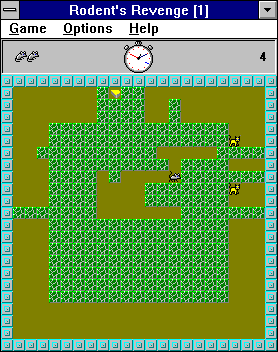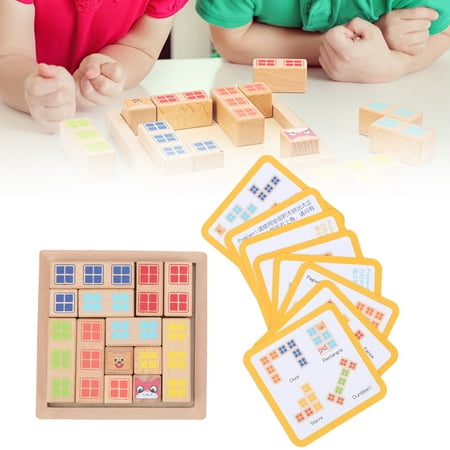Cat Mouse Block Game Old
A pressing issue among many Mac users is, “How do I keep my cat from enabling settings when they bat at or sleep on the keyboard?”
One reader in particular discovered his kitty keeps pressing the Option key when he’s not keeping her off it. If you have a certain Accessibility feature enabled, pressing the Option key five times in a row lets you use several centrally located keys to move a cursor around in lieu of another input peripheral.

Cat Mouse Block Game Old
Friskies Cat Games – Cat Fishing 2 App & DIY Cat Toys. Download a fun cat game app for free, see how to make homemade cat toys and find more cat entertainment. Wake up the cat – it’s time to play! Trap the Mouse is a quick game of logical thinking and spatial reasoning. The mouse wants to escape. Can you trap him? With Casey Kasem, Heather North. The wicked Cat Man shrinks Shaggy, Scooby, and Scrappy to mouse-size. / The gang wreaks havoc at a circus performance. / Scooby and the gang dodge airplanes and skyscrapers as the ride on a runaway hang glider. A game of cat and Mouse Keys on the Mac. Fluffy can be thwarted by changing an accessibility setting. Mac 911 By Glenn Fleishman, Senior Contributor Sep 8, 2019 10:00 pm PDT. A Mysterious Drone Reveals a Secret Cat-and-Mouse Game of Submarine Warfare Between Russia and NATO. By Nolan Peterson November 05, 2020. 28, curious beachcombers discovered an odd vessel wedged into some rocks on a remote Scottish island. The roughly 10-foot-long, surfboard-shaped watercraft was bedecked with an array.
While the feature is turned on, you can’t type with those keys, a problem for this reader because the movement keys include a character in his password.
That feature? Mouse Keys. Yes, the cat is playing with Mouse Keys.
It’s an easy problem to solve, however. Open the Accessibility preference pane, click the Mouse & Trackpad item in the list, and then uncheck Enable Mouse Keys. To make it stick, click Options and uncheck the box Press the Option Key Five Times to Toggle Mouse Keys.
When the user’s away, the cat will play, but you can also opt to lock your screen > Lock Screen when you leave your computer unattended.
This Mac 911 article is in response to a question submitted by Macworld reader Mark.

Ask Mac 911
Cat Mouse Block Game Old Man
We’ve compiled a list of the questions we get asked most frequently along with answers and links to columns: read our super FAQ to see if your question is covered. If not, we’re always looking for new problems to solve! Email yours to mac911@macworld.com including screen captures as appropriate, and whether you want your full name used. Every question won’t be answered, we don’t reply to email, and we cannot provide direct troubleshooting advice.
 Tom and Jerry. Sylvester and Tweety. Elmer Fudd and Bugs Bunny. These famous unlikely couples exemplify the tortured relationship prototype of pursuit and flight. Despite the frustration on the part of both the pursuer who can never be gratified, or the pursued who is constantly made anxious and must be on guard, the individuals in the couple are seemingly unable to exist without the other. Their pursuit of and escape from each other is what ultimately defines their relationship. They are engaged in a 'cat and mouse game.'
Tom and Jerry. Sylvester and Tweety. Elmer Fudd and Bugs Bunny. These famous unlikely couples exemplify the tortured relationship prototype of pursuit and flight. Despite the frustration on the part of both the pursuer who can never be gratified, or the pursued who is constantly made anxious and must be on guard, the individuals in the couple are seemingly unable to exist without the other. Their pursuit of and escape from each other is what ultimately defines their relationship. They are engaged in a 'cat and mouse game.'The term 'cat and mouse game' is an English-language idiom dating back to 1675 that means 'a contrived action involving constant pursuit, near captures, and repeated escapes.' So many couples seem to construct their relationship around this very dynamic of pursuit, near capture, and flight. One client recently remarked to me, 'I really like the beginning. Trying to get him interested in me. But the moment he becomes too interested and starts to pursue me, it's over. Yuck. I'm just not interested anymore. But then if he wants to break up, I start to feel a little panicked and I start being really nice to him.' Another noted, 'I always seem to find the most difficult women. I guess I must just like women who are hard to get. But when I get them...' A third revealed, 'Every time my husband and I are getting along for a little while, one of us always seems to pick a fight for no reason. It's like we can't get along well for too long, without one of us opting out. It's almost like we're not comfortable unless we're fighting.'
The truth is that these relationships reflect an unarticulated struggle that exists within the participants. They are both fearful of intimacy and their cat and mouse game allows them to engage in this unspoken dance, where each of them participates in maintaining a certain distance in the relationship. The truth is, unconsciously, the cat is interested in the mouse because it flees, and the mouse is interested in the cat because it chases. As long as one is fleeing and the other chasing, they can each be reassured of a connection between them, but also that a certain distance will be maintained.
Relationships like these may often reflect an underlying ambivalent attachment of childhood. Children who are ambivalently attached tend to be extremely suspicious of strangers. These children display considerable distress when separated from a parent or caregiver, but do not seem reassured or comforted by the return of the parent. In some cases, the child might passively reject the parent by refusing comfort, or may openly display direct aggression toward the parent. This is also consistent with the rapprochement phase of separation-individuation as described by psychoanalyst Margaret Mahler. During this developmental phase, the child's pursuit of independence is tempered by its feelings of separation anxiety, which then serves to regulate the space between the mother and the infant.
As adults, those with this ambivalent attachment style often feel reluctant about becoming close to others and worry that their partner does not reciprocate their feelings. This leads to frequent breakups, often because the relationship feels cold and distant or too engulfing. However, these individuals feel especially distraught after the end of a relationship. As a result, the relationship that is often maintained is like the one of Tom and Jerry, a cat and mouse game in which the partners often switch off between who will be the cat and who will be the mouse.
The underlying fear for the couple is as follows. The cat fears that she/he will be abandoned by the mouse, and therefore must maintain a certain proximity in order to feel secure, but sufficient space in order to survive the inevitable abandonment. The mouse fears that she/he will be overwhelmed or consumed by the cat and therefore must maintain a certain distance in order to maintain connection yet preserve the self. The truth is that neither one of the couple really knows how to be intimate without fear of abandonment or fear of merger or consumption. They, therefore, manage their fears by unconsciously regulating the space between them.

Cat Mouse Block Game Older
Cat and mouse games in relationships are exhausting and do little to deepen the connection between the parties. They are simply a way of the fearful couple playing at a relationship, without really having to risk true intimacy. In addition, each party might be unconsciously more gratified by other aspects of their role of cat or mouse. The cat feels powerful with the possibility of being to catch the unattainable, that there is something about his or her talent that is able to convert the unwilling into the willing. The mouse delights in being the object of such intense interest, that he or she has the capacity to motivate this drive to pursue in the other.
Yet, Tom never really ever gets Jerry, and Jerry is never really gotten. They never really get close enough to each other for true satisfaction and therefore never really have a truly intimate relationship, even if they marry. The work for each in the couple is to address their underlying fears of abandonment or merger/enmeshment that likely have their roots in their early lives. It is with this examination and working through that they could become ready to truly participate in an intimate relationship.